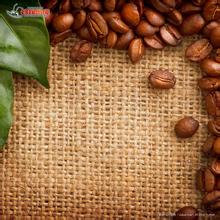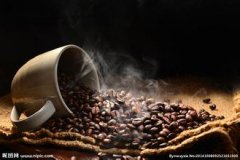Ethiopian Sidama Lion King Coffee Bean Flavor Description Taste Variety Introduction to the region of origin
Flavor description of Ethiopian Sidamo Lion King Coffee Bean introduction to the regional treatment of varieties
Although the Ethiopian Yirgacheffe coffee is petite, it is gentle and delicate and sweet. As the hometown of coffee, thousands of years of planting history and processing tradition in Ethiopia have created high-quality washed Arabica beans. Light baking has unique sweet aromas of lemon, flowers and honey, soft acidity and citrus flavors, fresh and bright on the palate. No milk or sugar, let the rich texture and unique soft flower scent brush your taste buds, leaving an endless aftertaste.
Yega Xuefei is a small town, 700-2100 meters above sea level, synonymous with Ethiopian boutique coffee. It has been a wetland since ancient times. The ancient saying "Yirga" means "settle down" and "Cheffe" means "wetland". The mode of production and flavor of coffee here are so outstanding that Ethiopian coffee farmers compete to take pride in the flavor of their coffee, making it the most famous coffee producing area in Africa.
In 2010-12, it received 92 and 94 points from the authoritative coffee review website Coffee Review in a row. The producing area belongs to volcanic soil with rich nutrients and good drainage. These fertile nutrients are maintained by the degradation of natural organic matter. This batch is produced by Sirsa Cooperative near Dilla town. The cooperative was founded in 1976 and is currently a member of the Sidamo Farmers' Cooperative Union (Sidamo Coffee Farmer Cooperative Union).
Coffee 36 flavors: dark chocolate, lemon, citrus caramel, black vinegar millet
Dry fragrance: the aroma of jasmine honey and lemon peel
Wet fragrance: honey, sweet flower, maple syrup, cream, citrus
Flavor: strong fruit tonality, melons, strawberries, peaches, ripe berries and other rich fruit flavors, with silky softness, clean and balanced taste and a lively, sweet finish.

Important Notice :
前街咖啡 FrontStreet Coffee has moved to new addredd:
FrontStreet Coffee Address: 315,Donghua East Road,GuangZhou
Tel:020 38364473
- Prev

Flavor description of Burundian coffee beans introduction to the varieties of grinding calibration by treatment method in manor production area
Description of the flavor of Burundian coffee beans; the variety of grinding scale for the treatment of Burundian coffee Lundi's coffee was first introduced by the Germans in the 1900s; they found that bourbon was the most suitable coffee variety to grow in the local climate. The local climate is usually tropical plateau climate, with a very large temperature difference between day and night. However, due to the suspension of investment in coffee research, bourbon
- Next

Introduction to varieties of Ethiopian coffee bean flavor description grinding scale treatment method
Ethiopian coffee bean flavor description grinding scale treatment variety introduction Ethiopia has a unique and different flavor, providing customers all over the world with a wide range of taste choices. In the highlands of southwestern Ethiopia, coffee growers in Kaffa, Sheka, Gera, Limu and Yayu
Related
- Detailed explanation of Jadeite planting Land in Panamanian Jadeite Manor introduction to the grading system of Jadeite competitive bidding, Red bid, Green bid and Rose Summer
- Story of Coffee planting in Brenka region of Costa Rica Stonehenge Manor anaerobic heavy honey treatment of flavor mouth
- What's on the barrel of Blue Mountain Coffee beans?
- Can American coffee also pull flowers? How to use hot American style to pull out a good-looking pattern?
- Can you make a cold extract with coffee beans? What is the right proportion for cold-extracted coffee formula?
- Indonesian PWN Gold Mandrine Coffee Origin Features Flavor How to Chong? Mandolin coffee is American.
- A brief introduction to the flavor characteristics of Brazilian yellow bourbon coffee beans
- What is the effect of different water quality on the flavor of cold-extracted coffee? What kind of water is best for brewing coffee?
- Why do you think of Rose Summer whenever you mention Panamanian coffee?
- Introduction to the characteristics of authentic blue mountain coffee bean producing areas? What is the CIB Coffee Authority in Jamaica?

